Goldfish Pond Water Quality
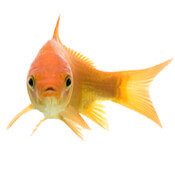
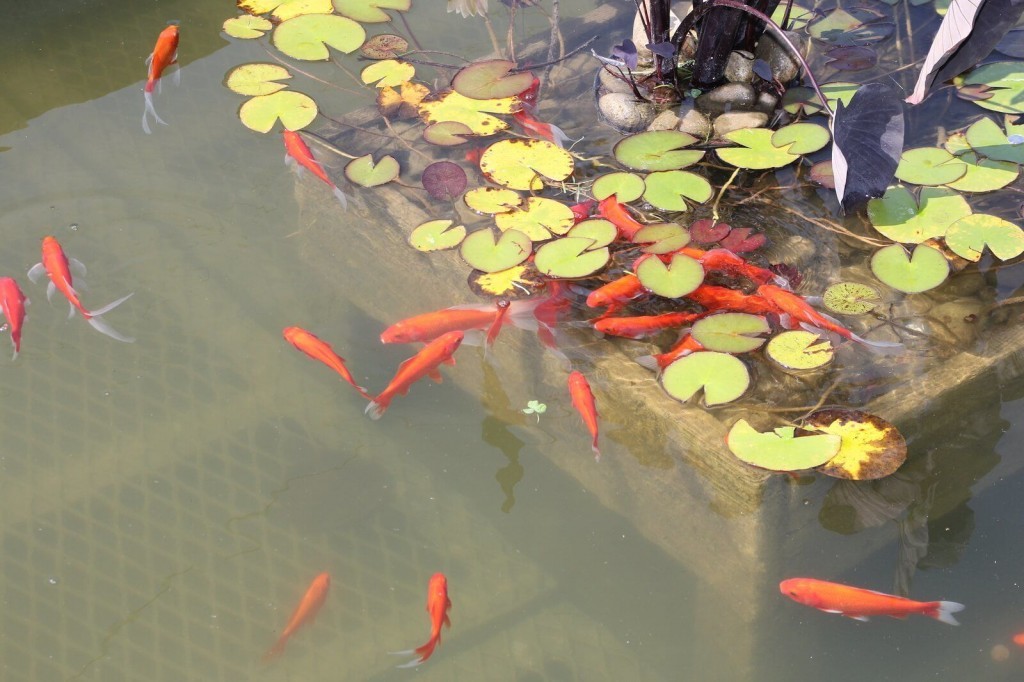
The Nitrogen Cycle of a Pond
Of all ingredients in Earth’s atmosphere, nitrogen makes up about 79 percent of it. You will also find nitrogen in the DNA, RNA and proteins, the building blocks of life, in all living organisms; which makes the nitrogen cycle a requirement for sustaining any life on Earth.In layman terms: your goldfish eats an aquatic plant and breaks down the plant’s proteins; the goldfish’s waste contains ammonia (NH3) gets absorbed into the soil, where aerobic bacteria convert it into nitrite (NO2) and then into nitrate (NO3); the aquatic plants in your goldfish pond absorb the nitrates as food and help the aquatic plant grow; your goldfish again eats the plant and the nitrogen cycle continues.It’s these beneficial bacteria that act as a filter and happen naturally that you want to have in your goldfish pond. Without them, ammonia levels in the water will build and if they reach .025mg/liter it will potentially kill your goldfish. This is more common In a new goldfish pond that doesn’t have establish beneficial bacteria yet so it’s important test the levels of ammonia, nitrites and nitrates.
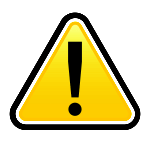
Avoid Overstocking
The number one cause for high levels of ammonia in your pond is overstocking. The more goldfish you put in your pond, the more ammonia that will build up. A goldfish excretes ammonia in two ways: 25% of it is through waste vented and the other 75% is through osmosis through the gills. If the water contains higher levels of ammonia than the goldfish, the goldfish will not excrete it and will eventually die from ammonia poisoning.
Remember that one goldfish needs approximately 10-20 gallons. Don’t buy all your goldfish at once; buy them slowly over time so you can more easily adjust your goldfish pond’s nitrogen cycle.
Related Content: Stocking a Pond
Adding Aquatic Plants
Aquatic plants are a vital component of the nitrogen cycle These live aquatic plants help control the levels of nitrates by using them up as plant food. If the ammonia levels in your goldfish pond are constantly too high try adding a few more plants.
Rotting plant material is also a source of your goldfish pond’s bioload, the biological material that adds to the water pollution of a pond. One of those pollutants is ammonia. If your ammonia test kit shows elevated levels of ammonia, try removing any rotting aquatic plant debris from your pond.
Related Content: Aquatic Plants
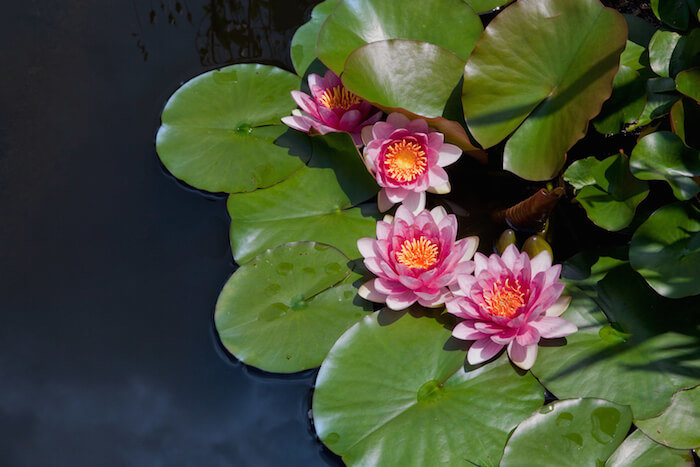
Perform a Water Change
Regular water changes of your pond water will help reduce ammonia levels. Fresh clean water is one of the best things you can give your goldfish. It is recommend to do a 20% water change every one to two weeks for an established tank. For your goldfish pond, do a 10% to 20% when your test kit shows elevated ammonia levels. Sometimes your goldfish pond will require a full water change in order to do seasonal maintenance when your aquatic plants out grow the size of your pond. Related Content: Pond Maintenance
Add Pond Filtration
Low Oxygen Levels in a Goldfish Pond
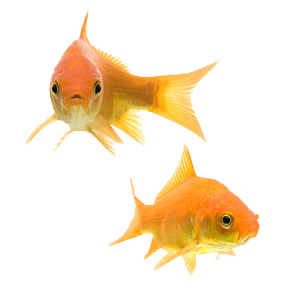
Over stocking goldfish in your pond will lower the levels of dissolved oxygen in it. Over stocking goes hand in hand with having more food and waste in your goldfish pond’s water. These decomposing pollutants will use up valuable oxygen in the water. Remember the rule for stocking your goldfish pond; 10-20 gallons of water are needed per goldfish.During the summer months or in periods of hot weather are when most goldfish pond keepers struggle with low oxygen levels in their pond. The combination of high temperatures and low water circulation are the main causes of lower than normal oxygen levels in your goldfish pond. This in turn can lead to very low levels of gas exchange (oxygen and carbon dioxide) and if measures are not taken, can lead to the death of your goldfish.Low oxygen levels in your goldfish pond can be caused by the aquatic plants you have living in it. Aquatic plants produce oxygen during the day but will then compete with your goldfish at night for the available oxygen in the pond’s water. This also goes for algae blooms, blanketweed, lilly pads and even green water. If the surface of your goldfish pond become over run with these floating plants like duck weed, frogbit or lilly pads, the surface area at which gasses can be exchanged is reduced, also contributing to lower oxygen levels in the water. These additional living inhabitants that compete for oxygen and reduce the surface area of your pond is most likely the cause for any goldfish loss overnight.
The symptoms
Along with goldfish loss, your goldfish will become less active, listless and you might even see them near the surface the surface gasping for air. You might even smell a foul odor coming from your goldfish pond.
Raise oxygen levels
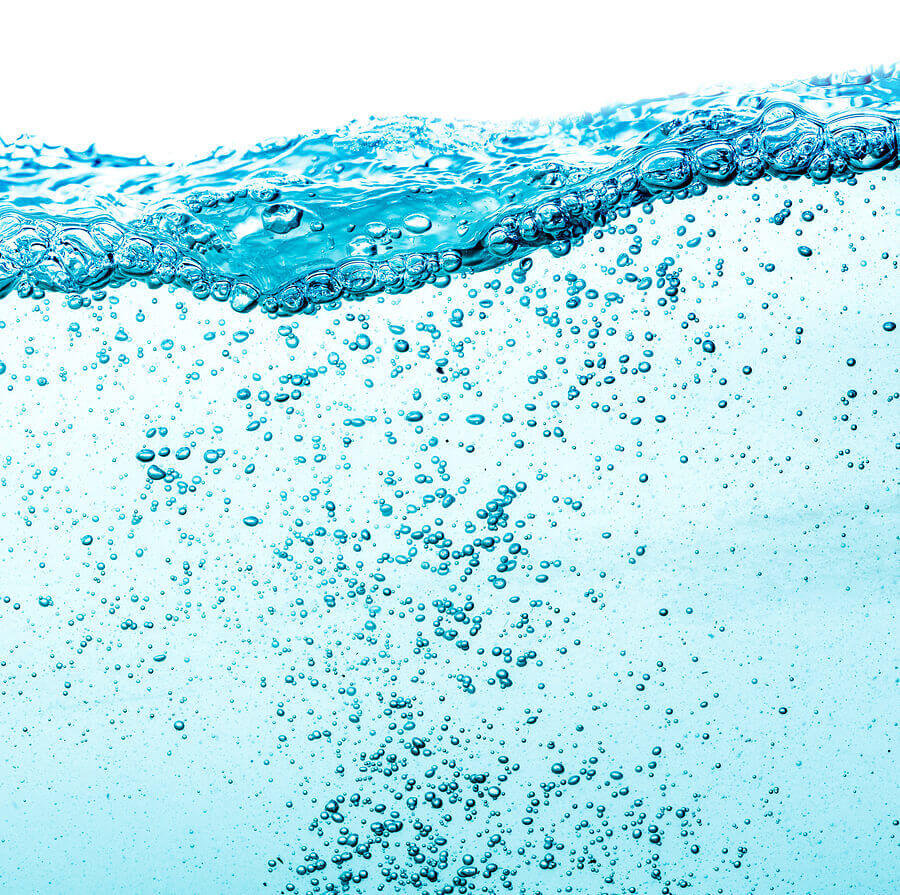
To keep your goldfish happy and oxygenated you should remove unwanted aquatic plants or algae blooms, creating more surface area and maximizing the exchange of gasses. You will also want to remove any decaying organic material from the bottom or floating free in the pond. If your goldfish pond has a waterfall or fountain you should run them over night during hot weather. These water features will help maintain oxygen levels at night when your aquatic plants using them up. Finally, if you don’t have one already, add a pond air pump that uses air stones to release small air bubbles into your goldfish pond and run it 24/7.
Maintain the pH Balance in Your Goldfish Pond
What is pH?
H2O splits into two parts: a positively charged hydrogen, H+ and the negatively charged hydroxyl, OH-; pH is the measurement of hydrogen ions available in the water. The term ph literally means “power of hydrogen”.
pH Scale
pH is based on a scale from 1-14; one being the most acidic and 14 being the most alkaline. The pH scale is logarithmic which means that for example, a pH of 8 is ten time more alkaline than a pH of seven. A pH level of 7 is neutral and in most cases, most tap water is close to that range, plus or minus .5 pH. Rain water in your tap water system can be the cause of a lower than 7 pH reading and an elevated reading can be the cause of chemically altered water by municipalities in hard water zones. Try to keep water at a pH of 7-8 to maintain a balanced pond.
Every Pond Owner Needs a Water Test Kit
Some experts consider a pH range of 7.2 to 7.6 to be the most optimal while other sources on the internet have ranges of 6 to 8.5. Those low and high levels should be interpreted as the levels at which a goldfish can survive and not levels that you should aim for. The point here is, goldfish are very hardy and can survive in a range of conditions.
pH Test
You can buy an inexpensive pH test kit at your local pet store. There are a few options when selecting pH test kits: strips, drops or tablets. All of them will give you close to the same readings; the tablets and drops being the more accurate methods but taking a few more minutes to get a reading. There are no real tricks or difficulties in testing your goldfish aquarium’s pH, just read the easy to follow direction on the box of your pH testing kit.
Low pH: Acidic
Low pH levels are caused by
- Rain water that can contain natural acids.
- Wind blown leaves and other organic material.
- Decaying and dying back aquatic plants.
Symptoms of low pH levels
- Goldfish are listless or slow moving
- Pond snails begin to die off
- Slow growth of aquatic plants
Advanced Symptoms of pH Derangement
- Excess mucus production of goldfish
- Milky skin of goldfish
- Slime coat peals off
- burning of goldfish skin
High pH: Alkaline
High pH levels are caused by
- New goldfish ponds can leach lime out of concrete.
- Concrete dust or particles left in new goldfish pond.
- Excessive algae growth that will consume CO2.
Symptoms of high pH levels
- Slow growth of aquatic plants
- White powdery coating on aquatic plants*
*calcium precipitating found on aquatic plants like Elodea Crispa.
pH Adjustment
Goldfish are sensitive to pH level changes. A fast decrease in pH can kill your goldfish. A fast increase is less harmful but in general, don’t change your goldfish tank’s water more than .5 pH at a time.
To lower your pH, you should make sure you seal any concrete with a aquatic concrete sealer, remove any concrete dust or debris, remove excessive algae growths and blanketweed. Using a water purifier like a Brita or Pur to fill your tank or pond can lower the pH by easily 1 pH level if not more (test it using your pH test kit). If you have even just a medium size pond, that could take a very long time.
Some people recommend using vinegar but that is not a good solution. It’s toxic to fish, uses up oxygen, increases bacteria and adds to the bioload as it breaks down. Hydrochloric acid is a better solution. Ultimately, the pH will likely go back up if you don’t address the source of the problem, such as exposed concrete. This forum thread explains the issue well. This resource also contains good information on high ph in a pond.
Some pond owners recommend using baking soda (emergency quick fix) and some suggest, limestone, crushed coral, oyster shell, or dolomite (slower to act, long-term solution). See how much to add by reviewing this chart. This article explains why liming (adding limestone) a pond is a way to raise the ph.
Reviewed By: Tim Winter

Tim Winter has a strong affection for pets and wildlife. His years of experience caring for various types of pets has led him to share his knowledge with others on the best practices in pet care. Tim holds a Bachelor of Science from the University of Oregon School of Journalism and Communications.

We have a large outdoor pond with plants and over 100 goldfish. We have waterlilies, frogs and dragon flies. The pond is fed by a natural spring; the fish have never been fed. Lately people have been asking me, if the children can feed the fish. I am worried about disrupting the balance in the ecosystem.
What do I tell the parents.
You state in bold letters that a pH of 7 – 8.5 is ‘neutral’ and acceptable.
8.5 IS FAR FROM NEUTRAL, it’s very alkaline, I would suggest, somewhere between 7 and 7.8 as the 2 absolute limits as stated elsewhere in the text and from other sources.
Thanks for the feedback. The line in question read, “Your goldfish will thrive in waters with a pH of 7-8.5, neutral to slightly alkaline.” We never said a pH of 8.5 was neutral but we will admit fault in using the the word, ‘slightly’ as 8.5 would be considered alkaline. The data was taken from, Halls, Steve. Your Healthy Garden Pond. Howell Book House, 2000. Chapter 1, Water Quality. We updated our numbers to take into consideration other sources. Thank you again for pointing this out. We are not perfect and do sometime have data that is not inline with the majority of experts. Users like you help make our site a better resource for all!
as you know any rain ,hail etc., will pick up any atmospheric pollutants. the fact that your water turned black suggests that a factory’s chimney, not necessary local , may be expelling toxic smoke and you had the bad luck of the hail stones to concentrate it. doug
I’ve had 3 goldfish in an outdoor pond for over 6 years we had a very bad storm with hail also the water turned black the next day they were dead also have 3 frogs in pond they are fine what could have caused this any ideas